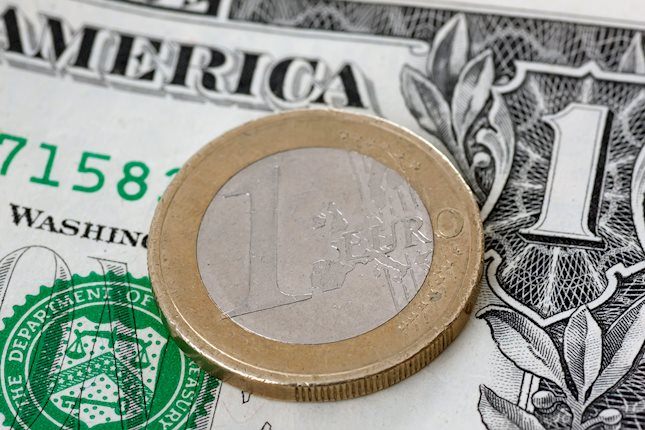What was Trump thinking when he assassinated Iran’s top general Qassem Soleimani with a drone strike in Baghdad?
Obviously, he was involved in many plots to threaten Americans and our interests. U.S. General David Petraeus claimed this was a bigger event than taking out Bin Laden… But wouldn’t it also be an obvious declaration of war out of an acceleration that started with Trump’s backing out of the Iran Nuclear Treaty and putting heavy sanctions on the country?
Now the world awaits Iran’s imminent response, with Trump threatening the worst if they do. This could escalate fast.
One of the central points made in my book Zero Hour was that the world was having a backlash to globalization after having been thrust so close together by global trade and the internet. People naturally come into conflict most often over political, and, more so, religious ideologies and beliefs.
The best solution in this 250-Year Revolutionary Cycle we find ourselves in is that political boundaries and systems realign along religious and cultural lines so that people can be happier and more focused in their own ideologies while networking and trading in a more diverse, globalized world.
Where have the greatest conflicts been in the Middle East, which is the area of most intense turmoil since the 1970s? It has been in Iraq, Syria, and Afghanistan. These are countries, especially Iraq, that have a very split populace of Sunni and Shia, and sometimes Kurd and Christian.
Here’s the map of Iraq from the book on page 64:
The southern side of Iraq, bordering Iran, is mostly Shia (as is the majority of the country at 60%); the middle is more Sunni (20% nationally); and the northern is more Kurd (17% nationally), with two smaller sectors clearly mixed.
I proposed that the best outcome here would be for the Kurd-dominated areas to merge with the Kurdish sectors of Turkey; the Shia-dominated area merge with Iran (or possibly as Iraq as an ally); and the rest become a Sunni country or merge with Syria which is Sunni dominant.
Look at the first actual outcome of this weekend’s attack. Iraq’s Parliament votes 170 to 0 to oust the U.S. from Iraq. This is a big victory for Iran, which has been working its Shia influences in Iraq, Syria and Lebanon to bolster their interests. And it was already the U.S. that ousted Saddam Hussein’s Sunni minority regime to Shia-dominant Iran’s favor.
Now Iraq kicks us out in immediate response to Soleimani’s assassination as the Shia majority interests are more in control now – and they use this as an excuse to back out of all limits on uranium enrichment. This move by Trump also only served to embolden the Iranian public against the U.S. when they were not as anti-U.S. as their government.
Next, Iran uses its influence to pressure the U.S. out of other areas – and maybe Russia has to step in as the deal maker as it did in Syria.
The real truth is that we have been the biggest destabilizing and inflammatory ingredient in the Middle East. As “infidels,” we only add Western religious tensions to the already strong religious ones there… The U.S. getting kicked out may be the best outcome yet, for us and the region… We’re most often hated even when we win or do something good.
My 35-year Geopolitical Cycle moves in 17- to 18-year positive and negative phases. The last negative cycle started with 9/11 in late 2001 and is due to bottom right around now – late 2019/early 2020. I have been saying that the U.S./Iran conflict intensifying here is likely the culmination of this negative cycle that should start turning up slowly in 2020, like the Cold War did in 1983 when Reagan started talking with Gorbachev.
Hence, I do not expect this to turn into another lengthy war in the Middle East like Iraq and Afghanistan. It may just set the stage for a faster realignment of Iran, Iraq, Syria, and possibly Afghanistan – which could allow for a more stable outcome in the years ahead. I expect a quicker resolution here, even if it ends up being dramatic and scary at first. If Shia and Sunni can separate into their own kingdoms, then they don’t have to fight as much.
What is still left here: Does Iran quietly take this victory of kicking the U.S. out of the region increasingly in stride with more tolerable responses, or does it react aggressively and open up for a more fatal blow from Trump that calls their military inferiority into clear view and capitulation?
Trump’s advantage here is that he clearly looks crazy and impulsive enough to strike back with major force against Iran. But our allies are likely to be more eager to re-negotiate with Iran and deter their rekindled nuclear ambitions again. Wouldn’t the U.S. withdrawing more from the Middle East most serve Trump’s America First policy?
This short-term crisis should also be the biggest factor in the stock market “on crack,” which reacted tepidly on Friday to this potentially huge issue. These types of markets typically ignore all bad news at first, and that’s been the case with this one, as it advances with over $400 billion (and rapidly rising) of recent Fed injections to fight the repo crisis. Soleimani’s assassination should have brought a 1,000-point+ slide.
Markets are heading back down on Monday, but not that strongly at all. We could get a continued melt-up and blow-off if this is resolved more peacefully and quickly, or that nasty 30% megaphone correction if it escalates dramatically.
Stay tuned on this one! The next four weeks should be critical.
The content of our articles is based on what we’ve learned as financial journalists. We do not offer personalized investment advice: you should not base investment decisions solely on what you read here. It’s your money and your responsibility. Our track record is based on hypothetical results and may not reflect the same results as actual trades. Likewise, past performance is no guarantee of future returns. Certain investments such as futures, options, and currency trading carry large potential rewards but also large potential risk. Don’t trade in these markets with money you can’t afford to lose. Delray Publishing LLC expressly forbids its writers from having a financial interest in their own securities or commodities recommendations to readers.
Recommended Content
Editors’ Picks

GBP/USD clings to recovery gains above 1.2650 after UK data
GBP/USD clings to recovery gains above 1.2650 in European trading on Friday. The mixed UK GDP and industrial data fail to deter Pound Sterling buyers as the US Dollar takes a breather ahead of Retail Sales and Fedspeak.

EUR/USD rises to near 1.0550 after rebounding from yearly lows
EUR/USD rebounds to near 1.0550 in the European session on Friday, snapping its five-day losing streak. The renewed upside is mainly lined to a oause in the US Dollar rally, as traders look to the topt-tier US Retail Sales data for a fresh boost. ECB- and Fedspeak also eyed.

Gold defends key $2,545 support; what’s next?
Gold price is looking to build on the previous rebound early Friday in search of a fresh impetus amid persistent US Dollar buying and mixed activity data from China.

Bitcoin to 100k or pullback to 78k?
Bitcoin and Ethereum showed a modest recovery on Friday following Thursday's downturn, yet momentum indicators suggest continuing the decline as signs of bull exhaustion emerge. Ripple is approaching a key resistance level, with a potential rejection likely leading to a decline ahead.

Trump vs CPI
US CPI for October was exactly in line with expectations. The headline rate of CPI rose to 2.6% YoY from 2.4% YoY in September. The core rate remained steady at 3.3%. The detail of the report shows that the shelter index rose by 0.4% on the month, which accounted for 50% of the increase in all items on a monthly basis.

Best Forex Brokers with Low Spreads
VERIFIED Low spreads are crucial for reducing trading costs. Explore top Forex brokers offering competitive spreads and high leverage. Compare options for EUR/USD, GBP/USD, USD/JPY, and Gold.
